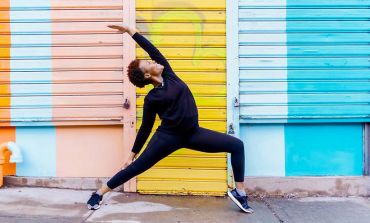
I was practicing yoga for six years before being diagnosed with major depressive disorder. Never was it a form of therapy until after I was discharged from an inpatient clinic. The safety, openness, and release that yoga gave me led to it becoming more than just a physical experience but a therapeutic one as well.
Yoga provided a safe space.
After I was discharged from the outpatient facility for three weeks, I didn’t feel safe. I was no longer being watched or under psychiatric care 24/7. Even though I was given an antidepressant prescription, a new therapist, and a discharge plan, I was no longer surrounded by a community of people who understood me, and I was stripped of my safe place that provided healing.
I no longer felt secure in my home with my parents, and I became fearful of having another depressive episode. This fear trickled into other aspects of my life, too; I soon even questioned whether I was ready to join the workforce. During a moment of clarity, I reflected on what it is that worked for me at the clinic—yoga and meditation.
Soon after this realization, I thought about ways I could start to incorporate yoga back into my life as a first step of healing and acceptance. One day, not too long after being discharged, I unrolled my mat in my room, turned on Yoga Studio app, and flowed for a good hour. That one day of flowing on my mat led to a regular daily practice.
My mat became a place where I didn’t judge myself. It became a place where I accepted myself for who I was. My mat became a destination for tears and fears. It was OK to fall and even quit, sometimes. It was the safety I needed and longed for after my diagnosis. Not only that, but yoga turned out to provide much more in my post-diagnosis life.
Yoga opened my body and, in turn, changed my life.
In my safety, I became more physically and emotionally open.
In my body, pigeon pose no longer became a chore, and wheel pose no longer became a fear. I started to crave further exploration of my limits: how far I could open up my hips, if I could open my shoulders wider in bridge pose.
When practicing the physical positions, I started to open up parts of my body I didn’t even know I could. Every time I came to the mat, it was evident how much I had grown since the last time.
I thought, “If I could grow so much on the mat, why couldn’t I grow after my diagnosis?” I started to open myself up to ideas that I could come out stronger and push past the cloud that followed me. It started with opening my mind to pushing past depression, which eventually led to a release.

Photo: @shannatyler_
Yoga released me from my diagnosis.
I was still going to talk therapy while practicing yoga. But I found myself constantly being bombarded with questions such as “How are you feeling this week?” and “Are you feeling depressed at all?”
Though talk therapy did have its positives, yoga helped me to fully release from my diagnosis.
Instead of answering questions about how I felt, I was flowing and reflecting on how I felt about my life. Along with opening on the mat with pigeon and bridge, I started releasing in corpse pose, also known as savasana.
As the final resting pose, savasana signifies dying. It symbolizes letting go of old habits and behaviors. In short, it was exactly what I needed.
Before I returned to my mat for healing, I was anxious. I was finally job hunting and having difficult conversations with my extended family about my diagnosis. I was piecing together my mental parts that needed growth, step-by-step.
For me, a yoga sequence with savasana afterward helped me let all the crap go. I released so much on that mat that was associated with my diagnosis.
I released the fear of finding a new job and career. I released the shame associated with telling my family about my diagnosis. I released the guilt I felt in saying no to old friends who wanted to go out and drink alcohol (it interacted with my new antidepressant).
Without yoga, I don’t know who I would’ve been after my diagnosis. I wouldn’t have had a safe space. I wouldn’t have become more open to possibility. I wouldn’t have been able to release the depressive cloud that followed me.
To this day, yoga has become my form of therapy that has allowed me to evolve into a newer version of myself—a version that seeks to thrive regardless of my diagnosis and depressive symptoms.
Want to learn more about the the link between yoga and depression? Read this science take on how yoga helps alleviate depression.
source:-.mindbodygreen.
